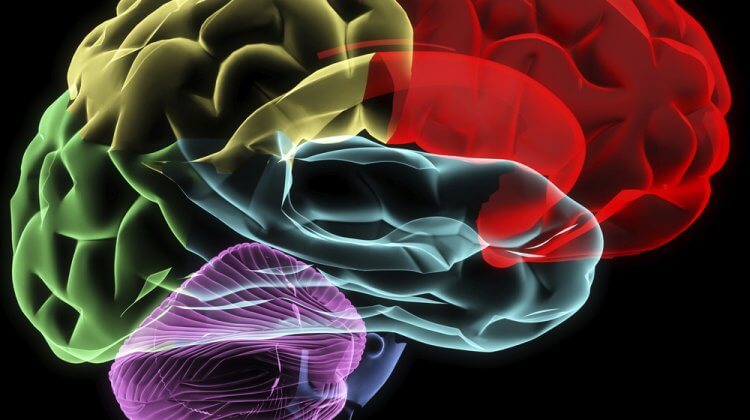
3. Plasma Testosterone Levels and Aggression
3.1 Testosterone and Aggression in Animals
Numerous studies have shown relationships between testosterone levels, dominance, and aggressive behaviour in various species of animals (Allee et al. 1939; Barfield et al. 1972; Bouissou 1983; Bouissou & Gaudioso 1982; Hamilton 1938; Kurischko & Oettel 1977; Payne & Swanson 1973; Rose et al. 1971; Simon et al. 1985; Steklis et al. 1985; Svare 1983; van de Poll et al. 1981, 1986; Zumpe & Michael 1985) including nonhuman primates (Joslyn 1973; Rejeski et al. 1988a; Steklis et al. 1985; Zumpe & Michael 1985).
It has been argued by some reviewers that primates are less dependent on androgens for the expression of aggression than ungulates or other animals lower in the evolutionary chain (Bouissou 1983). However, Rejeski et al. (1988a) determined that intramuscular injection of testosterone propionate increased the frequency of aggressive behaviour in monkeys. 10 cynomolgus monkeys were assigned to either an experimental (n=5) or a control group (n=5) and given biweekly injections; the experimental group received testosterone propionate 4 mg/kg, and the controls a sham solution. Prior to and upon completion of an 8-week treatment period, behavioural observations (slapping, grabbing, stare threat, chasing, fleeing, etc.) were conducted. Although the administration of testosterone propionate resulted in a significant increase in aggression, more important was the finding that changes in behaviour were mediated by social status; that is, the incidence of both contact and noncontact aggression in dominant monkeys was far greater than the frequency of these behaviours in subordinate monkeys.
Joslyn (1973) has reported that injecting 3 infant female rhesus monkeys with 2mg of testosterone propionate intramuscularly 3 times per week over 8 months increased their aggressive behaviour so much so that they replaced males in top positions of the social hierarchy. Since this behaviour persisted for a year after the last hormone injection, the author suggests either that the male hormone may have directly induced a permanent change in the nervous system or alternatively that the socially dominant behaviour was so well learned during hormone treatment that it became independent of hormonal support.
Indeed, Bernstein et al. (1974) have evaluated in a series of experiments the converse of this relationship, i.e. the influence of multiple environmental and social variable upon circulating testosterone levels in the male rhesus monkey. Factors shown to significantly influence levels of circulating testosterone included among others, alterations in social rank and ‘successful’ and ‘unsuccessful’ agonistic encounters.
In general, these and other studies indicate that the level of testosterone, particularly in the prenatal period, but also during puberty and even in adulthood are important in establishing a biological readiness for normal aggressive behaviour and in facilitating the expression of aggression in ‘appropriate’ social settings in adult animals. They also indicate that both social factors and learning significantly influence the actual expression of aggression in adulthood (Rada et al. 1976a). However, the extent to which exposure to testosterone or other anabolic-androgenic steroid at any phase of the life cycle, and particularly during adulthood, is related to altered moods and feelings in humans, to the expressions of aggression in humans and even other primates, relative to animals lower in the evolutionary chain, is not well known.
3.2 Testosterone, Mood and Aggression in Humans
Relative to the animal literature, fewer studies have assessed the relationship of endogenous or exogenous androgens to aggression or violent behaviour in humans. In general, the relationship is less clear than in animal research for a variety of reasons. First, it is difficult to show that animals, possibly excluding primates, experience emotional states that are qualitatively similar to human experiences such as euphoria, depression, anger and others. Second, the effects of sex hormones vary considerably among individuals as well as species. Consequently, conclusions drawn from animal models must be applied cautiously to humans. Lastly, human subjects cannot be subjected to many of the same stringent controls and manipulations used in animal research. Nevertheless, aggressive behaviour and other feelings of hostility have been demonstrated to be related to endogenous testosterone levels in a number of studies using human subjects.
Testosterone is thought to have an activating effect on human aggressive behaviour. The action of testosterone on the central nervous system apparently contributes to the elevated aggressiveness of males compared to females. However, among males, there is the question of whether the level of testosterone reaching the brain and interacting with receptors determines the level of aggressive feelings and behaviour. Attempts to answer this question have included investigations correlating levels of testosterone with aggressive behaviour in normal and incarcerated males, studies examining men with genetic differences in testosterone production for differences in levels of aggression, and research into the effects on behaviour of administered testosterone and antiandrogenic agents.
3.2.1 Testosterone Levels and Aggression in Adolescents and Young Athletes
Susman and associates (1985, 1987a,b) have reported on the relationship between hormone levels (gonadotrophins, gonadal steroids and adrenal androgens) and emotional dispositions and aggressive attributes for young adolescents in several reports. Participants were 9- to 14-year-old boys (n=56) and girls (n=52). Assessments of physical maturation consisted of pubertal staging according to Tanner criteria and serum determinations of luteinising hormone, follicle-stimulating hormone, testosterone, estradiol, dehydroepiandrosterone, dehydroepiandrosterone sulphate, and androstenedione. The psychological measures were the Psychopathology and Emotional Tone subscales from the Offer Self-Image Questionnaire for Adolescents and interview questions to assess interactions with peers. Psychopathology and emotional tone (sad affect) scores were higher for boys with high-for-age adrenal androgens (androstenedione) and lower for boys with high-for-age sex steroids (testosterone). Behavioural manifestations of sexuality, interest in dating, was higher for boys with higher-for-age adrenal androgens. Dating and spending time with friends were higher for boys with high-for-age gonadotrophins. Psychopathology and emotional tone were higher for girls with high-for-age gonadotrophins. The results indicate that high-for-age hormone level or early timing of puberty generally was related to adverse psychological consequences for boys and girls, with relations being stronger for boys than girls. Udry et al. (1985), using self-rating questionnaires describing adolescent pubertal development, sexual motivation, and details of sexual behaviour, found that serum testosterone was a strong predictor of sexual motivation and behaviour (with no additional contribution of other hormones) in a sample of 102 boys in grades 8, 9 and 10. No such relationship, however, could be detected in healthy young adult men (Brown et al. 1978).
Olweus et al. (1980) examined serum testosterone, aggression [Olweus Multi-Faceted Aggression Inventory for boys (Olweus 1973), Olweus Q Inventory (Olweus 1975), Thurstone Temperament Schedule (Thurstone 1950)], physical characteristics (pubertal stage, height, weight, chest circumference, and physical strength) and personality dimensions [Eysenck Personality Questionnaire (Eysenck & Eysenck 1975), Situation-Oriented Questionnaires (Schalling et al. 1975), Multi-Component Anxiety Inventory (Schalling et al. 1975)] in 58 normal, healthy 16-year-old adolescent males and found a significant association between testosterone and self-reports of physical and verbal aggression (Olweus Aggression Inventory, Olweus Q Inventory) mainly reflecting responsiveness to provocation and threat. ‘Lack of frustration tolerance’ was also significantly related to testosterone levels, but several other aggressive dimensions such as antisocial behaviour and impulsiveness were not significantly correlated with testosterone.
Data from a study designed to examine the relationship between serum testosterone levels and aggressive behaviours in a noncompetitive setting using 14 varsity college male hockey players were reported by Scaramella and Brown (1978). They found a significant positive correlation between only 1 of 7 aggressive items (response to threat) on their own aggression questionnaire and serum testosterone.
While these results appear to support the hypothesis of Elias (1981) that testosterone levels fluctuate with alterations in mood, it must be noted that testosterone levels fluctuate from minute to minute in ‘normal’ individuals, with the most marked changes occurring during puberty (Doering et al. 1975). The other side of the question of the relationship of testosterone and mood and behaviour and an important consideration, is to what extent aggressive behaviour or successful ‘expression’ of aggression or nonaggressive success produce higher levels of testosterone.
3.2.2 Testosterone and Mood in Adult Males
Persky et al. (1971) determined the plasma testosterone level and testosterone production rate in a group of 18 healthy young men, 15 healthy older men, and 6 hospitalised dysphoric men. A battery of anxiety [IPAT Anxiety Scale (Cattell & Scheier 1963), Multiple Affect Adjective Check List (Zuckerman & Lubin 1965), Manifest Anxiety Scale (Dahlstron & Welsh 1960)], depression [Minnesota Multiphasic Personality Inventory (Dahlstron & Welsh 1960)] and hostility tests [Buss-Durkee Hostility Inventory (BDHI; Buss & Durkee 1957)] were administered simultaneously. In the younger men, production rate of testosterone (determined by the constant infusion method) was found to be significantly correlated with both the sum of the hostility responses (Total Hostility) of the BDHI (r=0.66) and the IPAT Anxiety Scale (r=0.52). A multivariate regression equation was obtained for testosterone production rate using 4 subscale psychological measures of aggression and hostility (BDHI Factors I and II, MAACL-H, and IPAT-Q4) which accounted for 82% of the variance in the production rate of testosterone for the younger but not the older group. In the older men, age was the primary (negative) correlate of production rate. Persky et al. (1971) suggest that aggression and age are both important but opposite correlates of testosterone production.
Brown and Davis (1975) also found a significant correlation of the BDHI subscale of irritability with plasma testosterone level in 15 healthy college males. These authors nevertheless suggested that, although testosterone may be related to feeling angry, the translation of such feelings into behaviour is highly dependent upon other factors and did not occur in any of their subjects based on self-reports of aggressive behaviour.
The association between mood (MAACL, MMPI, BDHI) and testosterone levels in 20, normal young men was also investigated by Doering et al. (1975), who found only a very weak positive relationship (r=0.415, p < 0.10) between affect (BDHI Indirect Aggression Scale) and testosterone. Houser (1979) examined the inter- and intrasubject correlations between testosterone and various measures of behaviour (reaction time, arm-hand steadiness, time estimation), affect (MAACL, Nowlis Mood Adjective Checklist, Gottschalk Verbal Anxiety Scale), and physical discomfort (Moos Menstrual Stress Questionnaire) in 5 young males over a 10-week period and found that there was a general deterioration of central nervous system motor functioning and a decrease in positive affect associated with higher testosterone levels. There was also a general decrease in the level of social and general activity associated with rising testosterone values. As the author suggests, the results of this pilot study are obviously limited by the small sample size and a large intersubject variability.
In contrast to the above studies, Meyer-Bahlburg et al. (1974) in a replication of the Persky et al. Study, with a sample of normal male undergraduate students selected on the basis of 4 BDHI subscales which constitute Buss and Durkee’s factor II, found no significant differences in the blood production rate, plasma levels, or urinary levels of androgens in 5 low-aggression and 6 high-aggression subjects. Monti et al. (1977) likewise failed to find any correlation between aggression (as measured by the BDHI or as derived from observer ratings) and the concentration of circulating testosterone in 101 healthy 20- to 30-year-old males, who displayed a wide range of both testosterone values and BDHI responses.
3.2.3 Testosterone Levels and Aggression in Prisoners
Relating testosterone levels to mood, behaviour, and psychological inventories in other populations has been somewhat easier and is no doubt responsible for the seeming consensus that testosterone levels are related to aggression in humans. In 1972, Kreuz and Rose (1972) studied levels of plasma testosterone, fighting and verbal aggression in prison, and past criminal behaviour in 21 young prisoners. Several psychological tests [BDHI, IPAT Anxiety Scale, and Marlow-Crowne Social Desirability Scale (Crowne & Marlow 1960)] were administered. Although plasma testosterone levels, measured over 2 weeks, did not differ in those classified as fighting and nonfighting individuals based upon prison records, the 10 prisoners with histories of more violent and aggressive crimes in adolescence did exhibit significantly higher levels of testosterone than the 11 prisoners without such a history. Unlike Persky et al. (1971), Kreuz and Rose found that, although there were significant correlations among psychological tests, none of the test scales (hostility, anxiety, and social desirability) correlated with plasma testosterone. Nor did any test scales correlate with fighting behaviour. Perhaps the most important contribution of the Kreuz and Rose study is the presentation of the hypothesis that within a population that is predisposed by virtue of social factors to develop antisocial behaviours, levels of testosterone may be an important additional factor (a promoter rather than an initiator) in placing individuals at risk for violent or criminal behaviour.
Ehrenkranz et al. (1974) also examined plasma testosterone levels in 36 male prisoners: 12 with chronic aggressive behaviour, 12 socially dominant without physical aggressiveness, and 12 who were neither physically aggressive nor socially dominant. Subjects were selected from the general inmate population of a large state penal institution and grouped according to the type of aggressivity of their criminal behaviour: aggravated assault and murder; nonviolent crimes such as theft, cheque passing, and drug-related felonies; and level of social dominance. Classification of subjects was based upon agreement of the study’s investigators, the senior prison psychologist, the senior prison administrator, and inmates participating in the study. Although an attempt was made to halt prisoner medications 1 week prior to the study, several subjects continued to use various types of tranquillising drugs, such as a mixture of phenothiazine and barbiturate, and benzodiazepine. A battery of psychological tests including the BDHI was also administered. Both the aggressive and the socially dominant groups had significantly higher mean testosterone levels than the nonaggressive group. The aggressive group also had a significantly higher level of testosterone than the nondominant group, but not the socially dominant group, and higher than the other 2 groups combined. The aggressive group also scored significantly higher than either of the other 2 groups in the total hostility score of the BDHI. Unfortunately, any conclusions must be tentative based upon the use of other drugs, including barbiturates and all other drugs of abuse, which are known to affect the reproductive axis.
Rada et al. (1976b) also found, within imprisoned sex offenders, that a group of 5 violent rapists had significantly higher testosterone levels than 12 child molesters, 47 other ‘less violent’ rapists, or a control group of 48 healthy male prison employees. The mean BDHI score for all rapists was significantly higher than the mean for normals, but there was no correlation between individual hostility scores and plasma testosterone. Also, there were no significant correlations between age, race or length of incarceration and plasma testosterone level.
As part of a much larger, double-blind, controlled study of sex chromosome anomalies, hormones, and aggressivity in 4591 men, Schiavi et al. (1984) noted a proportionately significant increase in levels of testosterone when subjects were divided into smaller groups of nondelinquents (n=63), delinquents without violent convictions (n=11), and delinquents with violent convictions (n=4). However, the relation between testosterone level and criminal behaviour was not reflected in measures of aggression derived either from psychological interviews or projective tests (Rorschach Test, Word Association Test, Thematic Apperception Test).
3.3 Relationship of Testosterone to Moods Other Than Aggression
In a study of serum testosterone levels, social status and mood in male graduate students between the ages of 22 and 35, Mazur and Lamb (1980) reported that changes in testosterone levels did show a relationship to the subject’s moods. Specifically, their results suggest that when a man achieves a ‘rise in status through his own efforts’ (either graduation form medical school, winning a tennis match, or winning a lottery), and he has an elevation of mood as a result of the achievement, then that person is ‘likely’ to have a rise in testosterone. A recent study by Tanaka et al. (1989) found that positive mental health [vigour as measured by the Profile of Mood States (POMS) (McNair et al. 1971)] and athletic achievement motivation (challenge to higher goals, ‘fighting spirit’, and value athletics as determined by the Taikyo Sports Motivation Inventory) were each significantly correlated with higher levels of plasma testosterone. Elias (1981) has measured levels of circulating cortisol, testosterone and testosterone-binding globulin in 15 male wrestlers in relation to the outcome of wrestling bouts and found that concentrations of cortisol and testosterone increased consistently during wrestling bouts, while levels of testosterone-binding globulin dropped. Winners of competitive matches showed significantly greater increases in both hormones than losers. Although greater effort and/or haemoconcentration in the winners cannot be ruled out as an explanation, these findings are suggestive that humans, like other social mammals, might undergo specific endocrine changes in response to victory or defeat.
3.4 Testosterone Levels and Stress
An association between stress and levels of testosterone has been demonstrated in several studies. Kreuz et al. (1972) found plasma testosterone levels in 18 young men attending a military training course were significantly lower during a stressful period when compared with a less stressful phase. Likewise, Aakvaag et al. (1978) studied the effect of physical and psychological stress (a 5-day combat course) on 8 young male military cadets and found a significant and prolonged reduction in plasma testosterone levels. Francis (1981), in examining the relationship between high and low trait psychological stress, serum testosterone and serum cortisol, found males (30 to 55 years), classified as experiencing high psychological stress [State-Trait Anxiety Inventory (Spielberger et al. 1970)], possessed significantly lower testosterone levels than did their low stress counterparts. Morville et al. (1979) have demonstrated reduced testosterone levels following intense physical effort (100km running races) in male endurance athletes. Testosterone levels were also significantly decreased in 5 male athletes participating in a 20-day 1100km foot race (Schurmeyer et al. 1984).
In summary, a pattern of association between plasma testosterone and both subjectively-perceived and observed aggressive behaviour has been revealed in many of the preceding studies. However, the relationships between plasma testosterone and psychometric indices of aggression and hostility have been less consistent. The results of studies in this section are summarised in table I.
Part 4: Anabolic Steroid Therapy and Moods
Originally appearing in Sports Medicine 10(5) 303-337. 1990. Copyright © 1990 by Adis International Limited. All rights reserved. Reprinted by MESO-Rx with permission. Any duplication of this document by electronic or other means is strictly prohibited.
About the author
Warning: Undefined array key "display_name" in /home/thinksteroids/public_html/wp-content/plugins/molongui-authorship-pro/includes/hooks/author/box/data.php on line 11
Warning: Undefined array key "display_name" in /home/thinksteroids/public_html/wp-content/plugins/molongui-authorship-pro/includes/hooks/author/box/data.php on line 11
Warning: Undefined variable $show_related in /home/thinksteroids/public_html/wp-content/plugins/molongui-authorship/views/author-box/parts/html-tabs.php on line 30



Leave a Reply
You must be logged in to post a comment.